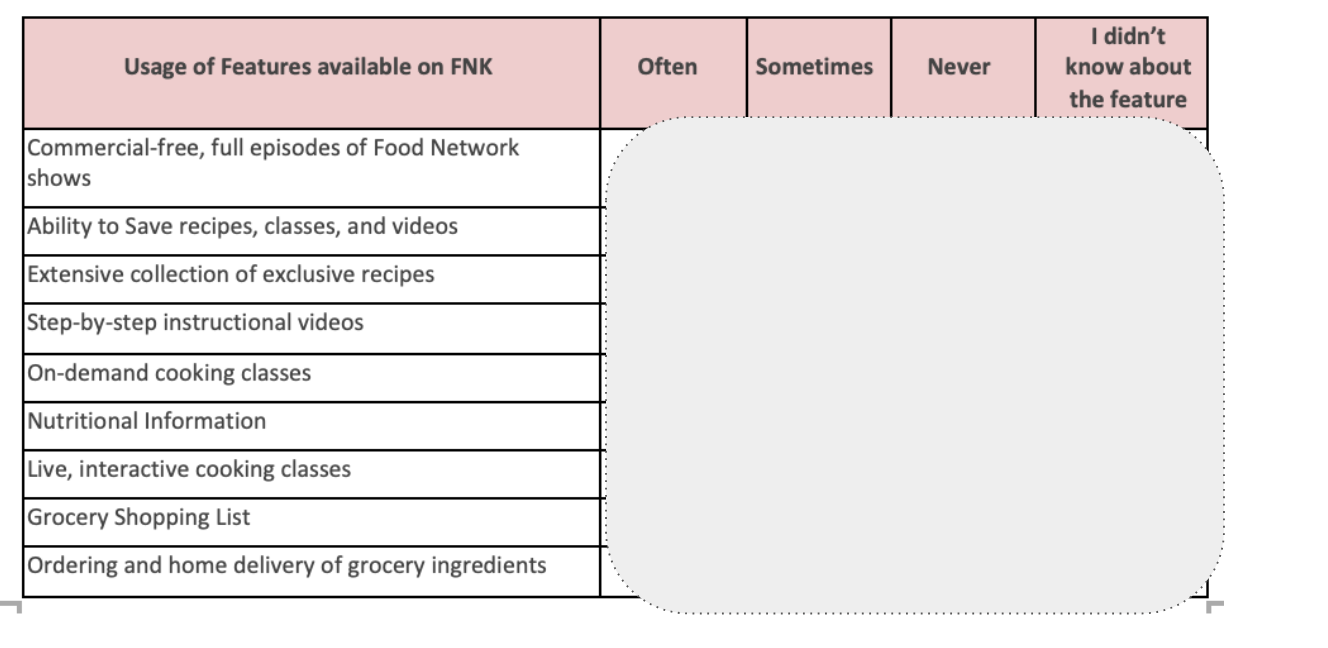Mixed Methods for Activation Flow Food Network Kitchen
The graphs and data presented are either part of the original UXR reports or created to present the project and key information is blocked to protect the confidentiality of the research.
Context
The company aimed to enhance the user activation flow for its Alexa Echo Food app, which provides users with recipes, cooking tips, and interactions with top chefs through voice commands. The goal was to understand the user journey, identify pain points, and optimize the activation process to increase user engagement and satisfaction. A series of qualitative and quantitative studies were conducted to understand user behavior during activation.
Objective
The primary objective was understanding how users interact with the app during the initial setup and activation, identifying barriers to activation, and providing actionable recommendations to improve the overall user experience. To answer this questions we proposed use mixed methods approach by conducting a survey and running a series of semi-structure interviews.
My Role
As the lead UX researcher, my responsibilities included:
Research Design: Developing a comprehensive research plan that integrated both qualitative and quantitative methods to gain a holistic view of the user activation flow.
A quantitative survey was conducted to better understand the experience of FNK users that are taking a part in the Amazon free trial. Around 980 users answered the survey.
The first qualitative test was conducted between (4 Fire TV and 3 Echo) users to understand the usability of the activation flow on FireTV and Echo Show.
The second qualitative test was conducted between with 10 current users (6 Fire TV and 4 Echo) of the Amazon free trial to understand the value proposition of the premium subscription. These users were recruited through the quantitative survey.
Data Collection: Conducting user interviews, usability tests, and surveys to gather detailed insights into the user activation process.
Analysis: Analyzing qualitative data to understand user behaviors and motivations, and quantitative data to identify trends and measure the effectiveness of the activation flow.
Reporting: Presenting findings and recommendations to stakeholders through detailed reports and visual presentations.
Collaboration: Working closely with the product, design, and engineering teams to ensure the insights were integrated into the app’s development and optimization process.



Key Learnings
Through this mixed methods approach, we uncovered several critical insights, among them
Pricing Confusion: Users were confused about the pricing structure, finding it unclear and difficult to understand.
Premium vs. Free Features: Users lacked clarity on what features were included in the free version versus the premium subscription, making it difficult for them to see the value in upgrading.


Impact
The research led to several impactful changes and successful outcomes:
Simplified Setup Process: The activation flow was redesigned to be more intuitive and user-friendly, reducing the number of steps required and providing clearer instructions.
Transparent Pricing: The pricing structure was clarified, making it easier for users to understand the costs associated with the app.
Feature Clarity: Detailed information about what features were included in the free version versus the premium subscription was provided, helping users make informed decisions about upgrading
